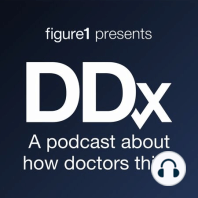2 min listen
A Lump on the Skull and the Misdiagnosis of a Rare Bone Disease
FromDDx
ratings:
Length:
11 minutes
Released:
Nov 30, 2022
Format:
Podcast episode
Description
In 1964, Nancy, a 5-year-old, is having her evening bath when her parents discover she has a lump on the skull the size of a grapefruit. This would mark the onset of a mysterious and debilitating disease that researchers are still struggling to understand. Over the next 40 days, medical professionals struggled to discover what was causing the lump on the skull. Each test seemed to exacerbate the swelling in Nancy's neck. In hindsight, that was a big clue, but it took doctors a while to recognize it. Instead, what happened next was a common mistake when it comes to patients with this disease. Nancy was diagnosed with terminal cancer. Doctors said she had less than a year. Yet, over the next few months, Nancy's condition didn't progress. She actually seemed to get better. Over the next few months, she was taken to a series of specialists. It was finally an oncologist who noticed something that was pivotal to her diagnosis ... her toes. Misshapen big toes — generally short and bending inward — are a hallmark of Nancy's disease. While Nancy had several telltale signs of the disease, diagnosing rare diseases is difficult in part because they’re exactly that: rare. “I can see how a practicing physician may feel a rare disease, ‘I'm never going to see it.’ But [this disease] is so striking that I think once you see someone with the disease … the image stays in your mind and even if someone, as a general internist or a pediatrician, never expects to see the case, you never know,” shares Dr. Eileen Shore, a medical researcher and geneticist specializing in musculoskeletal disorders at the University of Pennsylvania School of Medicine. And early diagnosis of this — and other rare diseases — is crucial, not only for treatment but to avoid diagnostic tests that can harm patients. While Nancy did finally receive a definitive diagnosis, many of the earlier diagnostic tests were actually causing more harm than good. “If you just have that in the back of your mind, that you have a vague image of what [it] is and see a patient who you think might have it,” says Dr. Shore, “to send a referral and get it confirmed, just think of the difference it would make in that family's life.”
Released:
Nov 30, 2022
Format:
Podcast episode
Titles in the series (58)
DDx Returns for a Third Season: Welcome back to DDx, a show about how doctors think. In Season 3, focused on rare disease, you’ll meet the doctors searching for the zebra among a herd of horses. Join host Dr. Raj Bhardwaj as he explores the challenges in distinguishing rare diseases from common ones, and how to recognize them when the stakes are life and death. by DDx
